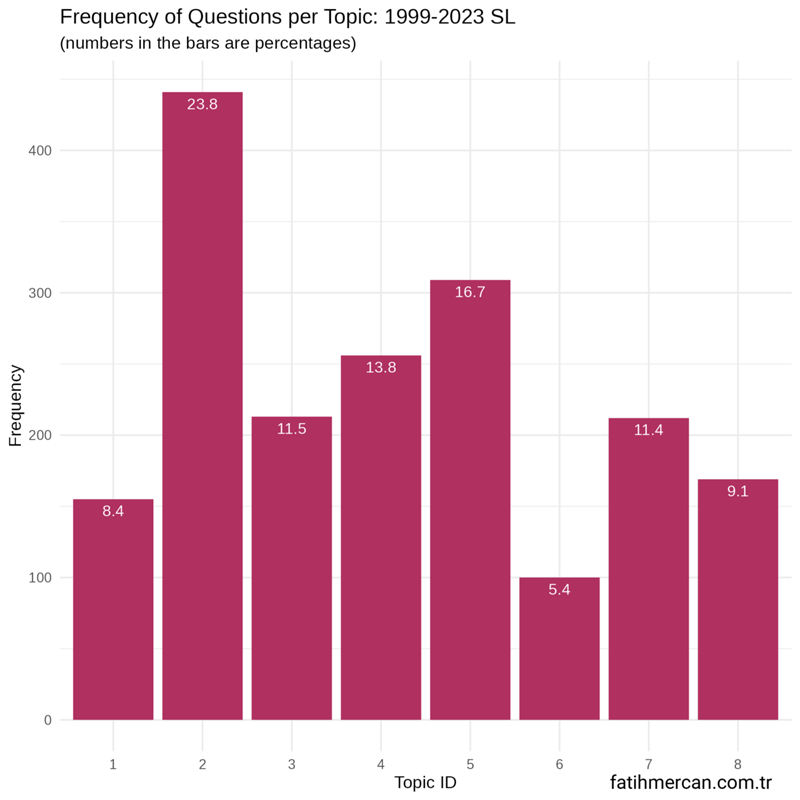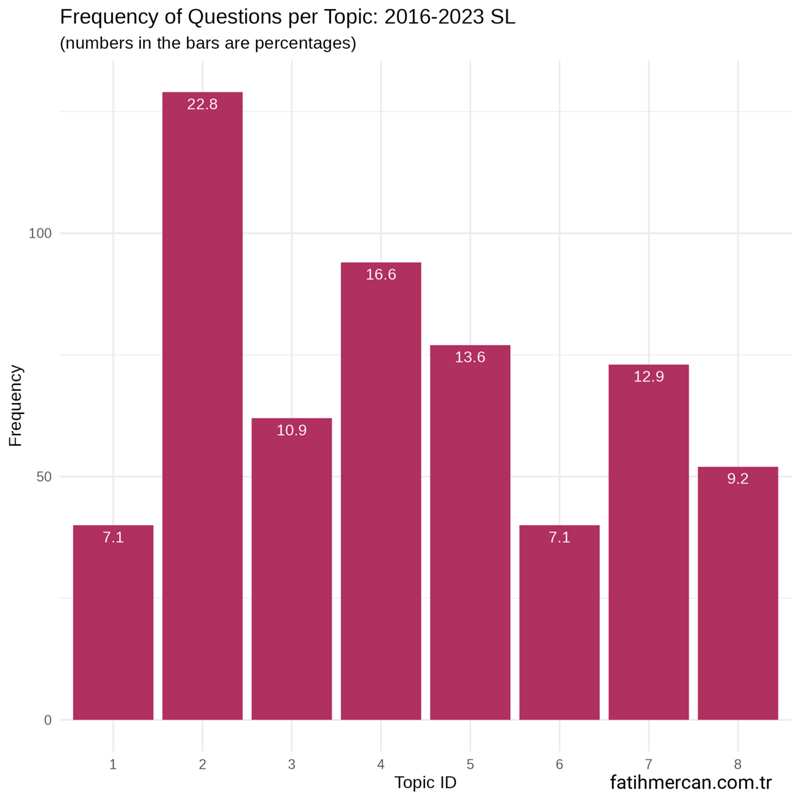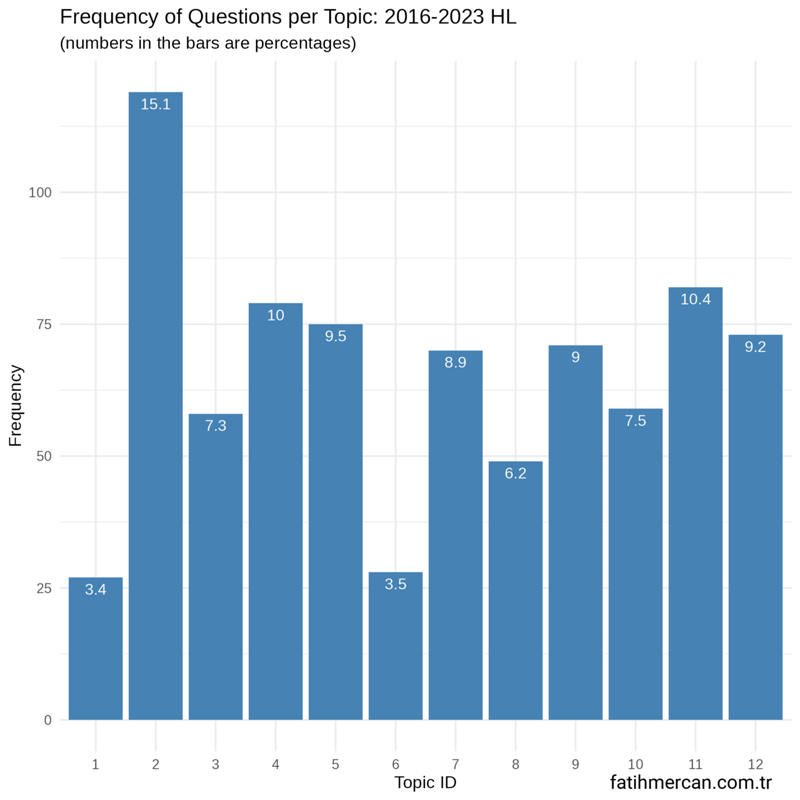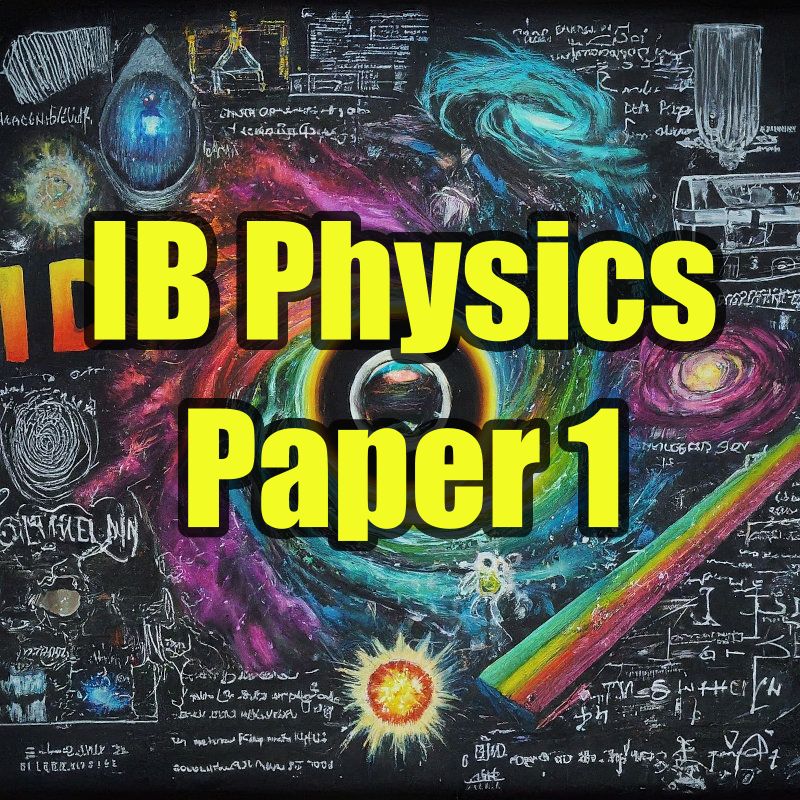This is an interesting question that can provide much direction while studying for IB Physics exams. I have analyzed the topics, subtopics, and understandings mostly assessed in Paper 1. If you are familiar with IB Physics, courses are offered at Standard Level (SL) and High Level (HL). IB Physics Paper 1 is a multiple-choice exam covering every syllabus topic.
What did I want to learn?
Any scientific inquiry begins with a problem to be solved and subsequent research questions. I wanted to know which topics the IB Physics exam heavily assessed. I specifically asked the following research questions:
What is the distribution of the number of questions by (1) topic, (2) subtopic, (3) understanding, and (4) in IB Physics Paper 1?
The terms may need clarification for those unfamiliar with the IB Physics curriculum. By topic, IB Physics Guide First Assessment 2016 (FA2016) refers to a unit; at least, that is what I call it. By subtopic, FA2016 refers to what I call topics. Understandings are part of learning objectives but without verbs. You can think of understandings as even finer structures under the subtopics. Applications and skills are complementary to understandings at the same level of granularity, that is, learning objectives, and this time, they do include action verbs. Applications and skills, together with understandings complete what students are expected to learn. Being a skills-based curriculum, FA2016 may look uncommon compared to a regular learning objectives-based curriculum such as the O-Level or A-Level Physics.
Why is this analysis important?
Understanding the distribution of the number of questions by topic, subtopic, understanding, and applications and skills may help you be strategic about your efforts. I suggest learning everything, but if you have limited time to revise, you may want to prioritize the topics and weigh your efforts accordingly.
How was the analysis done?
I classified each question into topic, subtopic, understanding, and applications and skills. Each question in Paper 1 assesses a single objective, unlike Paper 2, in which multiple objectives from multiple topics are integrated. Therefore, each question is classified into mutually exclusive topics, subtopics, understandings, applications, and skills. Each question can only belong to a single topic, subtopic, understanding, application and skill. My real learning took place in classifying the questions. I have organized about 4000 questions, which took hundreds of hours. But I’m so glad I did it; I have extensively learned the IB Physics curriculum.
When I finished classification, the product formed a complete database of questions I could query. I have analyzed the distribution of the frequency of questions by topic, subtopic, understanding, and application and skill.
Results and Discussion
Because the analysis involves a lot of data, it will be a series of posts, allowing readers to get into the details. This first page will give you an overview of the distribution by topic. Table 1 shows the topic numbers (IDs) and names to help you read the graphs. All topics are included in HL, and rows marked with SL and HL are included in both Standard and High Level.
| topic id | name | level |
|---|---|---|
| 1 | Measurement and uncertainties | SL and HL |
| 2 | Mechanics | SL and HL |
| 3 | Thermal physics | SL and HL |
| 4 | Waves | SL and HL |
| 5 | Electricity and magnetism | SL and HL |
| 6 | Circular motion and gravitation | SL and HL |
| 7 | Atomic, nuclear and particle physics | SL and HL |
| 8 | Energy production | SL and HL |
| 9 | Wave phenomena | HL |
| 10 | Fields | HL |
| 11 | Electromagnetic induction | HL |
| 12 | Quantum and nuclear physics | HL |
Table 1: IB Physics Topics
Frequency distribution of questions by topic for SL
Between 1999-2023
Figure 1 shows the frequency distribution of questions by topic for the entire data set for Standard Level (SL). Topic 2, “Mechanics,” accounts for almost one-fourth of the questions, averaging about seven out of 30 in Paper 1. Topic 5, “Electricity and Magnetism,” accounts for one-sixth or about five questions. Topic 4, “Waves,” accounts for one-seventh, or about four questions on the test, followed by Topic 3, “Thermal Physics,” and Topic 7, “Atomic, nuclear and particle physics,” each accounting for about one-tenth, or about three questions. The least assessed topic was Topic 6, “Circular motion and gravitation,” which only accounted for about one-twentieth or 1-2 questions.

Figure 1
Between 2016-2023
Figure 2 shows the frequency distribution of questions by topic for the years 2016 through 2023 for SL. We see that the distribution is similar between these two data slices. The shape of the distribution does not change much. Two differences stand out. First, Topic 6 is assessed more; now, two questions on average out of 30 were asked. Second, Topic 4 and Topic 5 have switched places.

Figure 2
Frequency distribution of questions by topic for HL
Between 1999-2023
Figure 3 shows the frequency distribution of questions by topic for the entire High Level (HL) data set. Again, Topic 1 is far more heavily assessed than the other topics, with 6-7 questions out of 40 in Paper 1. Topics 4, 5, 7, and 12 accounted for four questions each. Topics 3, 9, 10, and 11 accounted for about three questions each. Topics 1, 6, and 8 were the weighted least, each accounting for approximately two questions.

Figure 3
Between 2016-2023
Figure 4 shows the frequency distribution of questions by topic for HL from 2016 through 2023. Again, the distribution looks very similar to that of the entire dataset. Two changes stand out. First, Topic 11, “Electromagnetic induction,” is more emphasized, accounting for about four questions on average. Second, Topics 1 and 6 are less emphasized, now each accounting for 1 to 2 questions.

Figure 4
Conclusion
Please spend some time looking closely and interpreting the graphs yourself. But here are my suggestions for priority for revisions:
- For both SL and HL, Topic 2 is critical. Mechanics is the foundation of Physics, and IB reflects this well on the Paper 1 exam. So you need to understand and get very good at Mechanics. It is worth the time and effort.
- Electricity and magnetism can be considered your second priority for SL waves.
- Atomic, nuclear, and particle physics can be your third priority for SL.
- Electricity and magnetism coupled with electromagnetic induction should be your second priority for HL waves coupled with wave phenomena.
- Atomic, nuclear, and particle physics coupled with Quantum and nuclear physics can be your third priority for HL.
One caveat, though: How about Topic 1? This topic, “Measurement and uncertainties,” focuses on essential skills, and just because it is not heavily assessed in Paper 1, it does not mean IB turns a blind eye to it. Paper 3 has questions dedicated to directly evaluating knowledge and skills from Topic 1.
Where to go from here?
If you are interested in more detailed analyses of the subtopics and understandings follow these posts:
- Measurement and uncertainties
- Mechanics
- Thermal physics
- Waves
- Electricity and magnetism
- Circular motion and gravitation
- Atomic, nuclear and particle physics
- Energy production
- Wave phenomena
- Fields
- Electromagnetic induction
- Quantum and nuclear physics
This work/product/service has been developed independently from and is not endorsed by the International Baccalaureate Organization. International Baccalaureate, Baccalauréat International, Bachillerato Internacional and IB are registered trademarks owned by the International Baccalaureate Organization.
